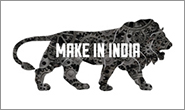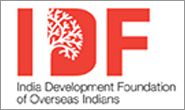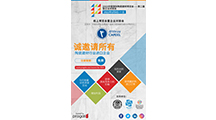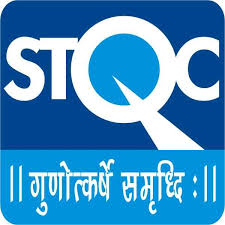The rapid expansion of India-China bilateral trade since the beginning of this century has propelled China to emerge as India’s largest goods trading partner by 2011-2012. Since beginning of the last decade, bilateral trade between the two countries recorded exponential growth. From 2016 to 2023, India-China bilateral trade grew by 66.38%, an average yearly growth of 9.48%. In 2023, the overall trade with China decreased by 1.66% year on year to reach USD 115.82 billion, crossing the USD 100 billion mark for a third time in a row. The trade deficit in 2023 came at USD 83.36 billion as India’s imports from China decreased by 2.96% to reach USD 99.59 billion, meanwhile India’s exports to China increased by 7.13% year on year to reach USD 16.23 billion.
|
INDIA-CHINA BILATERAL TRADE
( Figures in USD Bn)
|
|
Year
|
India’s Export to China
|
%Change
|
India’s Import from China
|
%Change
|
Trade Deficit
|
Total Trade
|
%Change
|
|
2016
|
8.96
|
-7.63
|
60.65
|
-0.74
|
51.69
|
69.61
|
-1.68
|
|
2017
|
12.66
|
41.29
|
72.04
|
18.78
|
59.38
|
84.7
|
21.68
|
|
2018
|
16.49
|
30.25
|
73.87
|
2.54
|
57.38
|
90.36
|
6.68
|
|
2019
|
17.12
|
3.82
|
68.35
|
-7.47
|
51.23
|
85.47
|
-5.41
|
|
2020
|
18.95
|
10.69
|
58.71
|
-14.10
|
39.76
|
77.66
|
-9.14
|
|
2021
|
23.05
|
21.64
|
87.65
|
49.29
|
64.6
|
110.7
|
42.54
|
|
2022
|
15.15
|
-34.27
|
102.63
|
17.09
|
87.48
|
117.78
|
6.40
|
|
2023
|
16.23
|
7.13
|
99.59
|
-2.96
|
83.36
|
115.82
|
-1.66
|
|
2024
(Jan-Jul)
|
8.46
|
-9.23
|
50.35
|
-9.02
|
41.89
|
58.81
|
-9.05
|
(Source: Department of Commerce, Ministry of Commerce and Industry, India)
Trade Deficit
Though trade volumes have grown exponentially, they have also led to the biggest single trade deficit India is running with any country. Our trade deficit concerns are two pronged. One is the actual size of the deficit. Two is the fact that the imbalance has continuously been widening year after year to reach USD 83.36 in 2023.
The widening trade deficit with China could be attributed to two factors: narrow basket of commodities, mostly primary, that we export to China and second, market access impediments for most of our agricultural products and the sectors where we are competitive in, such as pharmaceuticals, IT/IteS, etc. Our predominant exports over the last 5 years have consisted of iron ore, Light naphtha, p-xylene, shrimps and castor oil. Over time, these raw material-based commodities have been over-shadowed by Chinese exports of machineries, electronics, personal computers, Monolithic integrated circuits, parts of telephonic/telegraphic equipment, lithium-ion, fertilisers. We continue to engage the Chinese side for addressing market access issues.
Bilateral Investment:
Growth in bilateral investment has not kept pace with the expansion in trading volumes between the two countries. While both countries have emerged as top investment destinations for the rest of the world, mutual investment flows are yet to catch up. According to the Ministry of Commerce of China, Chinese investments to India in the year of 2021 was USD 63.18 million down 68.3% year on year and the cumulative Chinese investment to India by the end of 2021 amounted to USD 5.4 billion. Indian investment into China for the year 2021 was USD 6.32 million declining by 47.4% year on year and the cumulative Indian investment to China by the end of 2021 reached USD 943.96 million.
Institutional Bilateral Economic and Commercial Dialogue Mechanisms
India-China Economic and Commercial Relations are shaped through various dialogue mechanism such as:
Joint Group on Economic Relations, Science and Technology (JEG), led by the Commerce Ministers of both sides. Joint Economic Group (JEG) was established in 1988 during the visit of Prime Minister Rajiv Gandhi to China, to discuss trade cooperation issues. So far 11 JEGs were held with the last one in Delhi in March 2018. During the 9th JEG, the two sides also set up three working groups on Economic and Trade Planning Cooperation (ETPC), Trade Statistical Analysis (TSA) and Service Trade Promotion (or Trade in Services – TIS)
Strategic Economic Dialogue (SED) was established during the visit of Chinese Premier Wen Jiabao to India in December 2010, to discuss macro-economic cooperation. So far 6 SED meetings have taken place with the last one held in New Delhi in September 2019. There are 5 Working Groups under SED: Infrastructure, Environment, Energy, High Technology, Policy Coordination and Pharmaceuticals. The SED is co-chaired by Vice-Chairman NITI Aayog and Chairman, Chinese National Development and Reforms Commission (NDRC).
The NITI Aayog – Development Research Centre of China (DRC) Dialogue was established pursuant to the MoU signed during the visit of Prime Minister Narendra Modi to China in May 2015, to discuss global economic cooperation issues. Vice-Chairman NITI Aayog leads the India delegation while President (Minister-level) of DRC of China leads the Chinese delegation. The fifth NITI-DRC dialogue was held in Wuhan on 28-29 November 2019.
India-China Financial Dialogue is held in accordance with the MoU signed during Chinese Premier Wen Jiabao’s visit to India in April 2005. The ninth India-China Financial Dialogue was held in New Delhi on 25 Sepember 2019 which was co-chaired by Secretary DEA.
Other Institutional Mechanisms
Some of the other institutionalized dialogue mechanisms between the two countries include the JWG on Collaboration in Skill Development and Vocational Education, Joint Working Group on Information and Communication Technology & High-Technology, Joint Working Group on Industrial Park Cooperation, Joint Study Group and Joint Task Force on Regional Trading Agreement (RTA), India-China Joint Working Group on Agriculture, India-China Joint Working Group on Cooperation in Energy and the Joint Study Group on BCIM Economic Corridor.
Banking Sector Cooperation
Many Indian banks had established their presence in mainland China through branches or representative offices in major cities in China. However most of them have closed their operations in recent years and presently only SBI and ICICI have branches in Shanghai. SBI is the only Indian bank to have authorization to conduct local currency (RMB) business at its branch in Shanghai. In early 2011, Industrial and Commercial Bank of China (ICBC) secured a license to start banking operations in India. ICBC inaugurated their Mumbai branch on September 15, 2011. This marked the opening of the first branch of a mainland Chinese bank in India.
Bank of China (BoC) applied to the Reserve Bank of India for a license for its proposed branch in Mumbai. The approval was granted by RBI in July 2018.
Multilateral Development Banks
Asian Infrastructure Investment Bank: (AIIB)
In May 2014 India was invited by China to join the Bank after committing to the ‘Key Elements of AIIB’, to join in the multilateral negotiations on the MoU for establishment of AIIB. India joined the 5th round of multilateral consultations and subsequently signed the MoU on 23rd October 2014. The Articles of Agreement of the Bank were finalized at the 5th Chief Negotiators Meeting in Singapore in May 2015 and India signed the AoA along with 57 other prospective founding member countries on 29 June 2015.
India is the second largest shareholder with 7.6% shareholding and has a single member constituency in the Board. The bank conducts its business through quarterly BoD meetings and Annual Meetings. So far 9 annual meetings have taken place with the last one held on 25-26 September 2024 in Samarkand, Uzbekistan.
New Development Bank: (NDB)
NDB established its office in Shanghai and Mr K.V.Kamath took charge as the first President of the NDB. Mr. Kamath was succeeded by Marcos Troyjo of Brazil in May 2020. The initial authorized capital of the Bank was USD 100 billion of which USD 50 billion was subscribed initially by founding members (BRICS) who shall have equal shareholding initially. The bank also conducts annual meetings with the last one held on 29-31 August, 2024 in Cape Town, South Africa.
Following the opening of an Africa Regional Centre in South Africa and America Regional Office in Brazil, the Bank opened its India Regional Office in Gujarat International Finance Tec-City in June 2022. India is one of the biggest clients of NDB with 19 projects approved with commitment of USD 8.85 Bn as on 18 July 2023.
Films
India-China MoU on Audio-visual co-production was signed during Chinese President Xi Jinping’s visit to India in September 2014 and two Indian movies (PK and Dhoom3) were released in 2015. “Xuan Zang” was the first co-production film between India and China, featuring popular Chinese actor Huang Xiaoming. This film released in 2016 was submitted as a contender to represent Mainland China for Best Foreign Language Film at the 89th Academy Awards in 2017. In 2017, “Kungfu Yoga”, featuring Jackie Chan and “Buddies in India” were released. In recent years, Indian movies such as Dangal, Secret Superstar, Bahubali, Hindi Medium, Toilet, Andhadhun etc, registered great success at the Chinese box office.
International Bamboo and Rattan Organization (INBAR)
INBAR is an Intergovernmental body for Bamboo and Rattan Research and Development founded in 1997. It currently has 50 member countries. India became a member in 1998. India is the largest country in terms of landmass under Bamboo and Rattan plantation. However, China is known to control more than 83% of the commercial market of Bamboo and Rattan resources, employing more than 7.7 million people directly or indirectly. Ambassador Teshome Toga Chanaka from Ethiopia is the DG of the Organization. He started his term in April 2024. The secretariat is located in Beijing. Embassy acts as the focal point for interaction with INBAR secretariat. Nodal ministry for INBAR is Ministry of Environment and Forests. INBAR has its South Asia Centre located in Delhi.
Other Economic and Commercial Issues
Cooperation in the Petroleum Sector: Constitution of a JWG and draft MOU on cooperation is under consideration. The Petroleum Secretary visited Beijing in October 2018 followed by visit of Vice Minister of NEA to New Delhi in February 2019 and September 2019.
Double Taxation Avoidance Agreement (DTAA): India and China signed the DTAA on 18 July 1994 and the Agreement came into force on 21 November 1994. Both the countries agreed to revise the DTAA in its entirety and the revised DTAA was signed in May 2018.
Social Security Agreement: India shared a draft SSA with the Chinese side in October 2016. JS (ED) led a technical meeting during 28-29 May 2018. China’s MoHRSS led the delegation to India from Nov 13-15, 2019. There is a divergence as far as ‘Totalisation’ clause is concerned.
Indian Companies in China
With the growth in bilateral trade between India and China in the last few years, many Indian companies have started setting up Chinese operations to service both their Indian and MNC clientele in China. Indian enterprises operating in China either as representative offices, Wholly Owned Foreign Enterprises (WOFE) or Joint Ventures with Chinese companies are into manufacturing (pharmaceuticals, refractories, laminated tubes, auto-components, wind energy etc.), IT and IT-enabled services (including IT education, software solutions, and specific software products), trading, banking and allied activities. While the Indian trading community is primarily confined to major port cities such as Guangzhou and Shenzhen, they are also present in large numbers in places where the Chinese have set up warehouses and wholesale markets such as Yiwu in Zhejiang. Most of the Indian companies have a presence in Shanghai, which is China’s financial center; while a few Indian companies have set up offices in the capital city of Beijing. Some of the prominent Indian companies in China include Adani Global, Dr. Reddy’s Laboratories, Aurobindo Pharma, Matrix Pharma, NIIT, Bharat Forge, Infosys, TCS, APTECH, Wipro, Mahindra Satyam, Dr. Reddy’s, Essel Packaging, Reliance Industries, SUNDARAM Fasteners, Mahindra & Mahindra, TATA Sons, Binani Cements, etc.
Chinese Companies in India
According to information available with the Embassy of India, more than 100 Chinese companies have established offices/operations in India. Many large Chinese state-owned companies in the field of machinery and infrastructure construction have won projects in India and have opened project offices in India. These include Sinosteel, Shougang International, Baoshan Iron & Steel Ltd, Sany Heavy Industry Ltd, Chongqing Lifan Industry Ltd, China Dongfang International, Sino Hydro Corporation, etc. Many Chinese electronic, IT and hardware manufacturing companies are also having operations in India. These include Huawei Technologies, ZTE, TCL, Haier etc. A large number of Chinese companies are involved in EPC projects in the Power Sector. These include Shanghai Electric, Harbin Electric, Dongfang Electric, Shenyang Electric etc. In recent years, Chinese mobile companies have achieved remarkable growth in India, with companies like Xiaomi, Huawei, Vivo and Oppo occupying major share of Indian mobile handset market.





























